When it comes to installing a pool, many homeowners have questions about how close they can be to their houses. Can the pool go right up against the house? How much space should be left between them? In this article, we will answer all of your common questions about pool and house proximity! We’ll also provide some tips on how to create the perfect pool installation. So, whether you’re just starting to think about getting a pool or you’ve already started the process, read on for some helpful information!
What Constitutes a Pool?
For the purpose of this article, a pool is defined as an in-ground or above-ground structure filled with water and primarily used for swimming. This includes traditional pools, hot tubs/spas, plunge pools, natural pools, lap pools and infinity/infinite edge pools. It does not include ornamental ponds, rock pools or fish ponds.
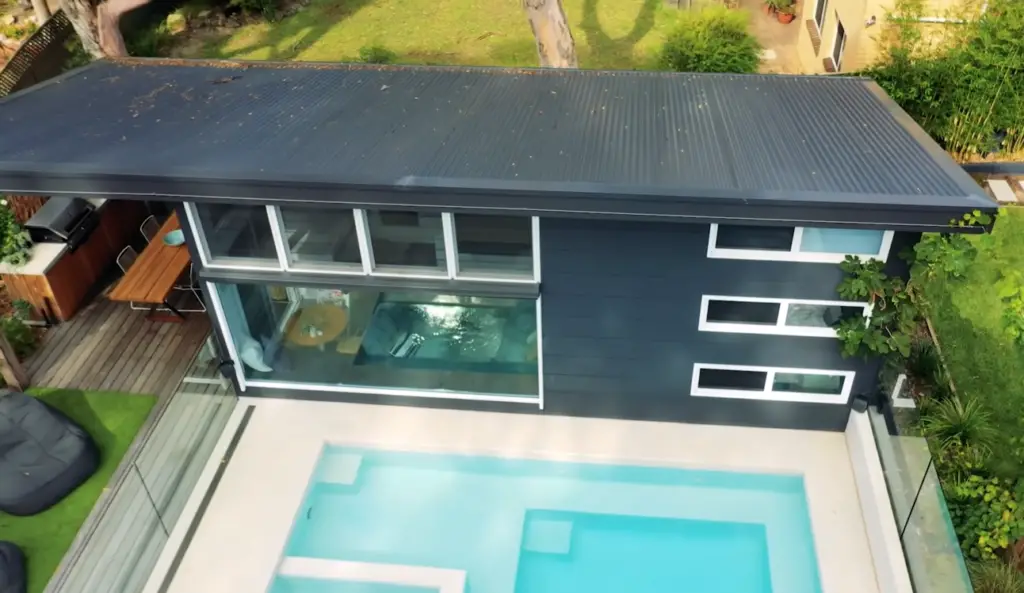
How Close Can an Above Ground Pool be to a House
Regulations vary from state to state and even municipality to municipality regarding the safe distance between a house and a swimming pool.
In some cases, however, there may be more strict rules in place that require greater distances between your home and the pool. It’s important to research your local ordinances before building or installing an above ground swimming pool near your home.
It is also important to consider the height of the pool. If its wall is higher than 3 feet, it should be placed further away from your house in order to reduce any potential risks. Taller pools can cause a greater risk of debris and water damage to your home if they are too close.
Ultimately, as long as you follow local regulations and consider safety when placing an above ground pool near your house, it’s perfectly fine for you to enjoy swimming in your own backyard! Just make sure that you check with local authorities and do your research beforehand so that you can ensure a safe and enjoyable experience for everyone involved.
How Close Can an Inground Pool be to a House
This will depend on several factors, including local building codes and regulations as well as the type of pool you have chosen. Generally speaking, most pools should not be placed within 10 feet from any structure or property line. This includes houses, garages, sheds, trees and other structures on the property.
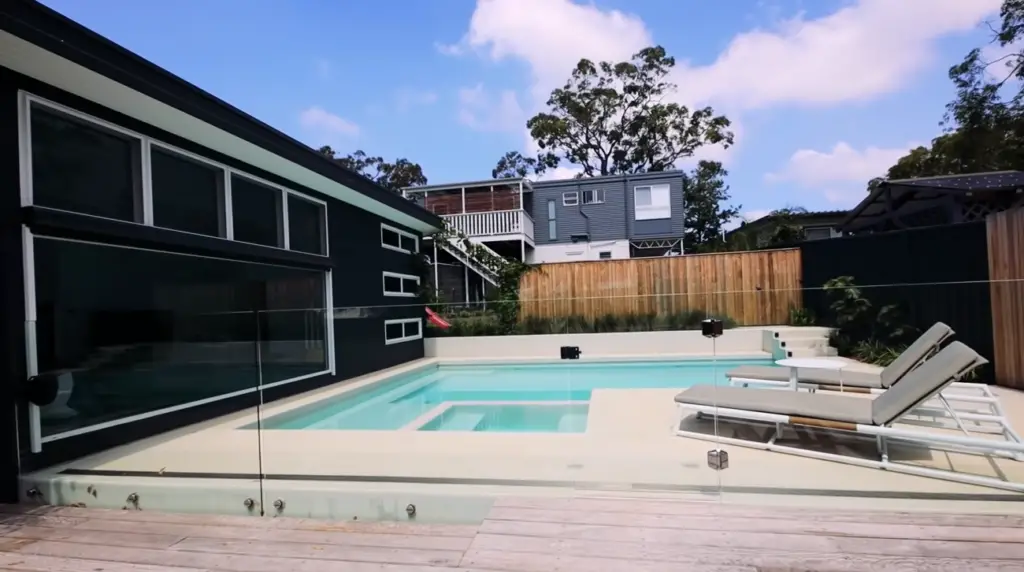
It’s important to remember that some cities and states may have stricter regulations regarding how close a pool can be to a house. For instance, many communities require that an in-ground swimming pool must maintain a minimum distance of 20 feet from all residential buildings. Additionally, some jurisdictions may also prohibit the construction of any pools within certain parts of a yard. Before beginning construction, be sure to consult your local building codes and regulations. [2]
When plotting the location of your pool in relation to other structures on your property, you should also consider safety factors like proximity to electrical wiring and gas lines. For instance, an electrical line running too close to a pool can cause irreparable damage if it is exposed during maintenance or installation activities. Any gas line should be located at least 5 feet away from the proposed pool area for safety reasons. Additionally, you may want to avoid placing your pool too close to trees as this can complicate cleaning and require additional maintenance measures such as frequent skimming and vacuuming of debris from the water’s surface.
Distance from The House and Other Structures
In most jurisdictions, there are specific regulations concerning the distance a pool must be from buildings and other structures. This usually includes a certain number of feet away from fences, walls, or trees.
The exact specifications vary by location so it is important to get an idea of what your jurisdiction requires before you begin installing your pool. In general, however, if you plan on having the pool close to any structure such as a wall or fence then you should ensure that it is at least 10-15 ft away for safety reasons.
Furthermore, if the planned location of your pool is close to a dwelling then it’s advised that you check with local authorities regarding any building regulations that may exist in order to avoid potential fines or legal issues. The minimum distance requirements for a pool and a dwelling vary from state to state so it is important to make sure that you are following the correct guidelines when installing your pool.
It’s also worth noting that in some cases, if there is an underground water source close by then additional precautions may be required such as installing a barrier or liner to avoid seepage into the surrounding soil. Again, it’s important to check with local authorities regarding any regulations before installation begins.
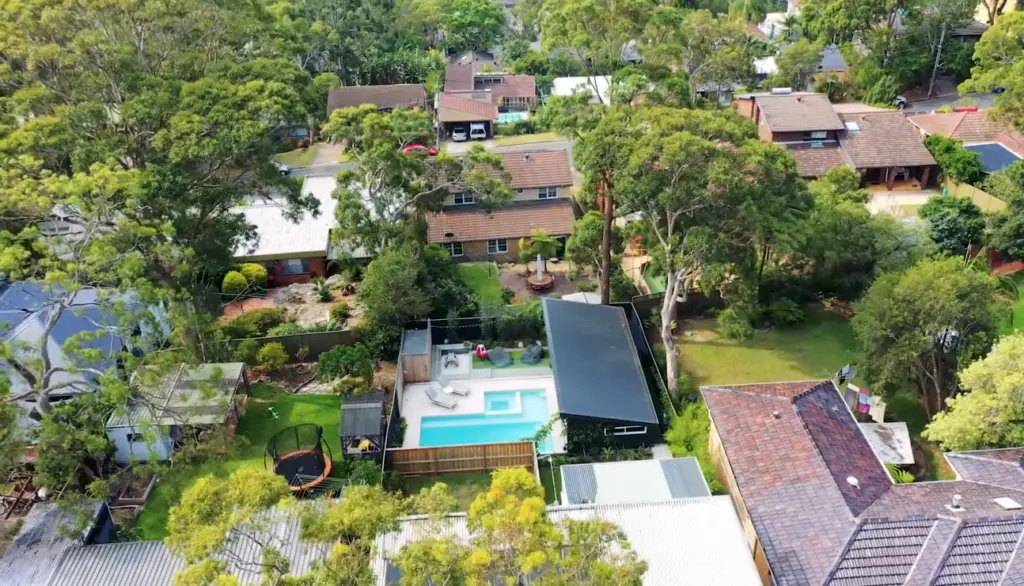
Landscaping and Drainage
It can be helpful to look at existing drainage systems on your property and consider whether they will allow for some additional runoff due to having a swimming pool in close proximity. You may need to consider redirecting runoff away from your home — this can often be done with strategic land grading and landscaping. Additionally, you may want to install some additional waterproof membranes around the pool itself as an extra precaution against flooding.
In general, if you feel that your current drainage systems may not be up to the challenge of dealing with a pool close to your home, then it’s worth exploring how you can improve them. Working with an experienced landscaper or contractor can help ensure that your drainage is sufficient and allow for a more informed decision about the distance between your pool and house.
A good rule of thumb is to always leave at least 10 feet between any swimming pools and houses — this gives enough room for safe movement around the area as well as providing some additional peace of mind when it comes to potentially hazardous flooding. Ultimately, though, it depends on the type of soil in your area and whether or not you have existing drainage solutions that can handle the demands of a pool in close proximity.
Once you have assessed all these factors, you can then make an informed decision about how close your pool should be to your house — and ensure that it is as safe and enjoyable as possible!
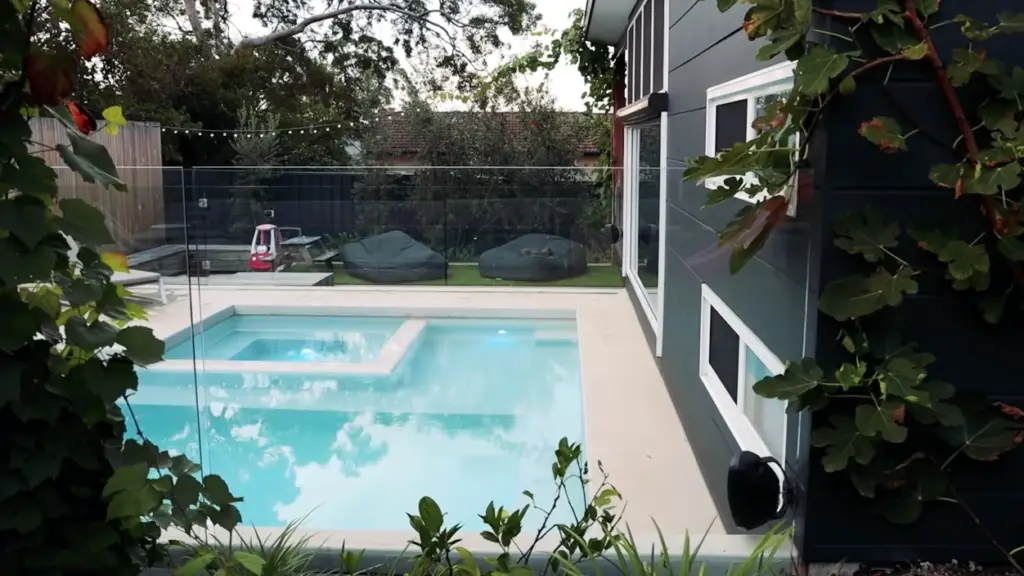
Pool Size
It’s important to take into account any local building codes which may dictate specific distances from the home depending on the size of the pool you plan on installing.
If you’re planning on having an in-ground swimming pool installed, make sure that you check with your local council first to see what their distance regulations are for pools. Different councils have different requirements but it’s best to double-check before getting started as this could save you time, money and stress further down the line!
In addition to the distance from the house, you also need to consider the size of your pool when it comes to deciding how close it can be. A large pool requires a larger area than a smaller one so make sure you plan accordingly. It’s important to take into account any trees or other plants that may be in the vicinity and make sure that they are located a safe distance away from the pool as well.
Finally, if possible, build your pool with enough safety features such as fencing and gates to keep children and pets away from the water’s edge. This is essential for keeping everyone safe around the pool and will help ensure that your backyard swimming experience is enjoyable for all!
By taking these factors into consideration when planning out the location of your swimming pool, you can ensure that your pool is placed in a safe and appropriate distance from the house.
Check your Council’s Regulations
If you plan to install a pool near your home, the first thing you should do is check with your local council. Different councils have different regulations about how close pools can be located to existing buildings or structures. Depending on where you live, there might also be special zoning requirements or other rules that determine the distance between your pool and house. It’s important to make sure that you comply with these regulations before building your swimming pool so that you don’t run into any legal issues later on.
Consider Safety Features
When it comes to planning the location of a pool near a house, safety must always come first. You need to think about what kind of protective features will be necessary if children are going to be using the pool. For instance, if you plan to build a pool close to your house, then it would be wise to install fencing or other barriers around the area for extra security. It is also important to consider the materials that will be used in the construction of the pool so that they are safe and non-toxic.
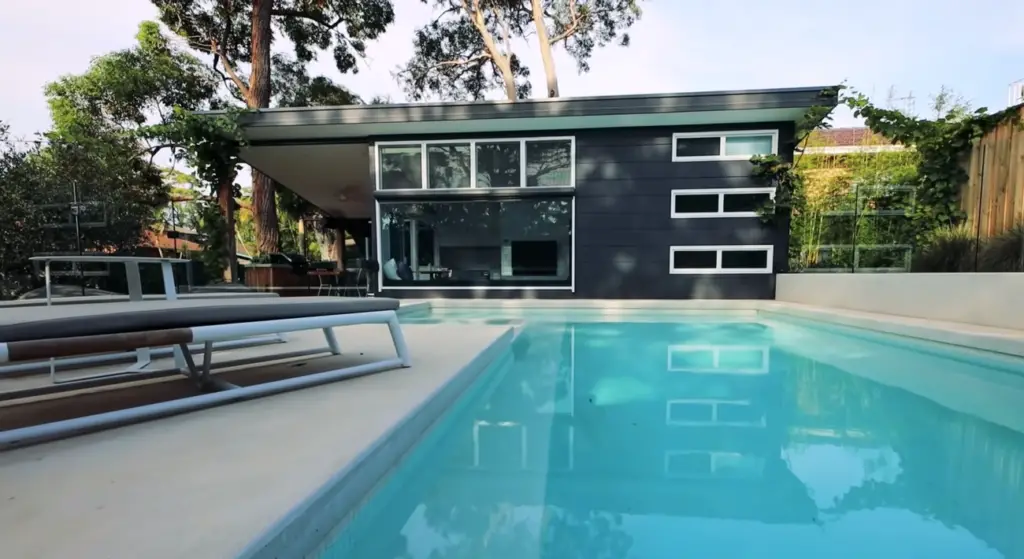
FAQ
How close to a house can a swimming pool be?
The distance a swimming pool can be from a house depends on the state and local codes one is building in. In general, pools must be at least ten feet away from any structure or property line. Additionally, many states have specific setback requirements for certain types of properties, such as those that border conservation areas or wetlands. It’s important to check with your local planning commission or building department to find out the exact requirements for your area. [3]
Can a pool be too close to a house?
Yes, a pool can be too close to a house. Depending on your location and local regulations, your pool may need to be at least 10 feet away from the side of your home. This is because pools can cause water damage when they are too close. The closer the pool is to the house, the more likely it is that excess water will seep into the walls and foundation of your home, leading to costly repairs down the line. It’s also important to note that if you have an above-ground pool, there must be even more distance between it and your home — typically 20 feet or more — to ensure proper safety and prevent any potential accidents due to ladder placement near windows or decks. Additionally, some areas require fencing around an in-ground or above-ground pool to ensure the safety of children and animals. These fences need even more space around the pool, which can limit your ability to place it close to your home. In sum, when considering how close can a pool be to a house, make sure you are familiar with local regulations and consider potential water damage before making any decisions.
How close to a house can an above ground pool be?
The answer to this question depends on the height of your pool, the size of your yard, and the regulations in your area. Generally speaking, if you have an above ground pool that is less than four feet high, it can be placed relatively close to a house. However, be sure to check with local building codes and regulations before making any final decisions.
If you have an above-ground pool that is more than four feet tall (or an in-ground pool), then it’s best to keep it farther away from your home for safety reasons. The Centers for Disease Control and Prevention recommend keeping all pools at least 20 feet away from a house — this gives plenty of space for people to swim safely without worrying about slamming into a wall or window.
Another important factor to consider is how much room you have in your yard. If you have a relatively small space, then it might not be possible to keep the pool far away from your home. In that case, make sure to follow local building codes and regulations closely — this will help you determine exactly how close the pool can be without compromising safety.
It’s also important to remember that any kind of pool must adhere to certain setbacks regarding other buildings or structures nearby, such as fences or decks. Again, this varies depending on where you live and what type of pool you’re installing, so make sure to check with your local ordinances before getting started.
How close to a neighbor can I build a pool?
The distance between your pool and a neighbor’s property will depend on local regulations. In some areas, pools must be at least 10 feet away from any boundary line or structures located on the adjacent property. This includes not just the house itself, but also garages, sheds, decks, and other outbuildings. It’s always best to check with your local building authority first before starting any pool construction to ensure you are in compliance with all rules and regulations. [4]
Additionally, there may be other restrictions like fencing requirements that need to be met depending on where you live. Your municipality may require a fence of a certain height around the pool area for safety reasons – this can range anywhere from four feet to eight feet high! Swimming pools are considered a hazardous situation and thus, most cities or towns will have specific guidelines in place to ensure that everyone is kept safe.
Of course, even if the law doesn’t require it, you should still be mindful of your neighbor when building a pool. If possible, try to leave at least five feet between any structures on their property and yours so that neither party is inconvenienced. It’s also courteous to inform them ahead of time about your plans and seek out their opinion on the matter (if they are amenable). Doing this will go a long way towards keeping a positive relationship with your neighbors!
Useful Video: How Close Can A Pool Be To My House?
Conclusion
In conclusion, the answer to “how close can a pool be to a house?” depends on several factors. However, most building codes require that pools are placed at least 10 feet away from a dwelling for safety reasons. It is important to research your local building codes and consult with an expert or contractor to ensure that you adhere to all regulations when installing or modifying your pool. Additionally, it is wise to consider other potentially dangerous elements such as trees, fences and outdoor furniture when determining the correct distance between a pool and a house. By following these guidelines, you can ensure that your pool will be safe and structurally sound for years of enjoyment!
References
- https://www.shopclearwaterpools.com/how-far-does-above-ground-pool-need-to-be-from-house/
- https://kloterfarms.com/how-close-can-pool-be-to-house/
- https://www.sandiegopools.com/how-far-away-from-my-house-does-my-pool-need-to-be/
- https://homedecorbliss.com/how-much-space-between-house-and-pool-in-ground-and-above-ground/





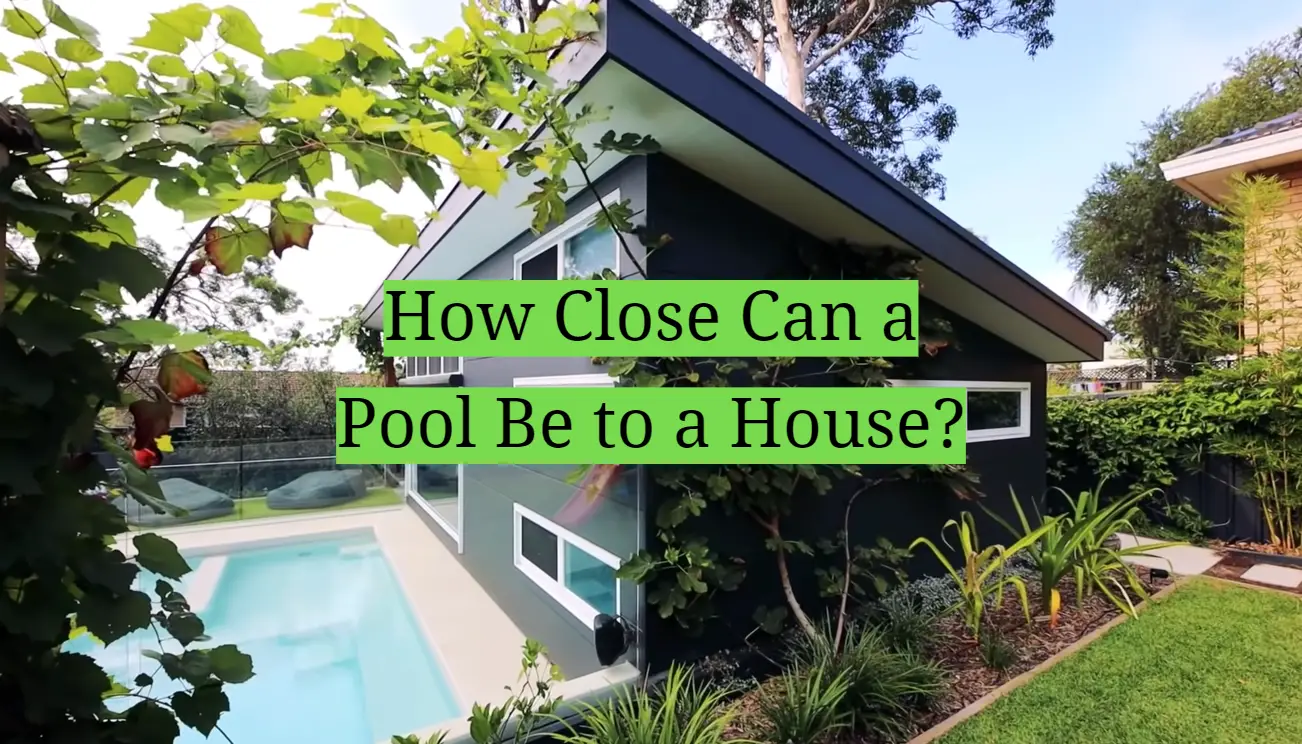





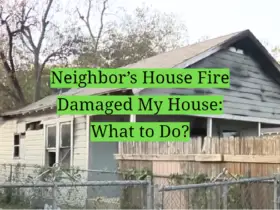


When we were looking to install a pool in our backyard, we were surprised to learn there are regulations on the minimum distance a pool needs to be from the house. Our town requires at least 10 feet between any structure and the pool. This is for safety reasons and to allow enough space for people to walk around the pool without intruding too close to the home. We ended up placing our above-ground pool about 15 feet from the back of the house to leave plenty of space.
We decided to install an above-ground pool right next to our house because we have a smaller backyard. The manufacturer said it was fine to abut the pool up against the house as long as we followed their installation instructions. We did have to install a fence with a gate around the whole thing for safety and insurance requirements. Overall, it has worked out well having the pool so close for easy access, though it does feel a bit crowded on that side of the yard.
When researching above-ground pools, I learned there are no set restrictions on how close the pool can be placed to a house. Most people recommend leaving at least 3 feet between the pool and home for accessibility reasons. We ended up installing our above-ground pool about 5 feet away from the back deck which feels like a good distance. It still allows plenty of space to walk around the pool and relax on the deck without feeling too crowded.
We ran into challenges planning our above-ground pool placement because our backyard is so small. The pool company recommended it be at least 5 feet from the house, but that would cover our entire yard! We decided to place it 3 feet from the back door against the manufacturer’s advice to maximize space. It is a bit tricky navigating between the pool and house, but it works fine for our needs and was the only way it would fit.
I was surprised to learn there is no maximum distance required between a pool and a house. Some people install pools right next to the home while others have them at the furthest point on the property! For us, having the pool about 15 feet away feels like the ideal distance. It’s easy to access from our patio and sliding door while still feeling like its own separate space in the backyard. The extra distance also keeps noise levels down when we’re entertaining.
We ran into challenges installing our above-ground pool since our backyard is small. Most pool companies recommend placing pools at least 10 feet from the home. But when we tried that, there was almost no yard left! So we decided 7 feet would have to do. It’s a little tricky navigating the space between the pool and the house, but the compromise was worth it so we could have a pool at all.
When deciding where to put our above-ground pool, I made sure to follow the manufacturer’s recommendation to allow 6 feet clearance from the side of the house. This creates enough space to comfortably walk around the pool without feeling too cramped or crowded. I’m very happy with having this buffer zone, I think 10 feet would feel excessive and encroach too far into the yard. The 6 foot spacing turned out to be ideal.
Ideally, an inground pool should be installed at least 10 feet away from the house according to pool companies. This allows for better circulation and leaves plenty of space for landscaping, walking around the pool, and pool maintenance. However, every yard is different. If you have limited space, it may be necessary to place the pool closer to the home as long as local regulations allow it. Proper barriers like fencing are even more critical for safety in this case.
When we installed our in-ground pool, we placed it 15 feet away from the back of the house. This may seem far, but we wanted plenty of space for lounge chairs, tables, and an outdoor kitchen area between the pool and the house. I love that there is enough room for kids to play and run around the pool safely without being right up next to the home. The extra distance also helps reduce noise from pool activities during summer parties.
I wish we had left more space between our above-ground pool and the house. The manufacturer said we only needed 5 feet but I wish we had done at least 8. It’s very cramped trying to entertain and set up patio furniture between the pool and deck. And if we have more than 4 people in the pool, it starts to feel crowded. Next time I’ll allocate more backyard space for better flow.
When installing our pool, our contractor recommended placing it 10-12 feet from the home minimum. We ended up doing 12 feet because we also wanted space for landscaping features. I’m very happy with this distance – it still feels connected to the backyard living space but also distinct from it. I think anything closer than 10 feet would feel too crowded and noisy. The extra space makes the pool area feel open.
We decided to install our above-ground pool only 6 feet away from the house against the manufacturer’s guidelines. Now I regret not leaving the full 8-10 feet they recommended. It’s so tight between the pool and the deck that we can’t really use that space. If I could do it over again, I would allocate more yard to the pool area even if it meant a smaller pool. The cramped space is frustrating.